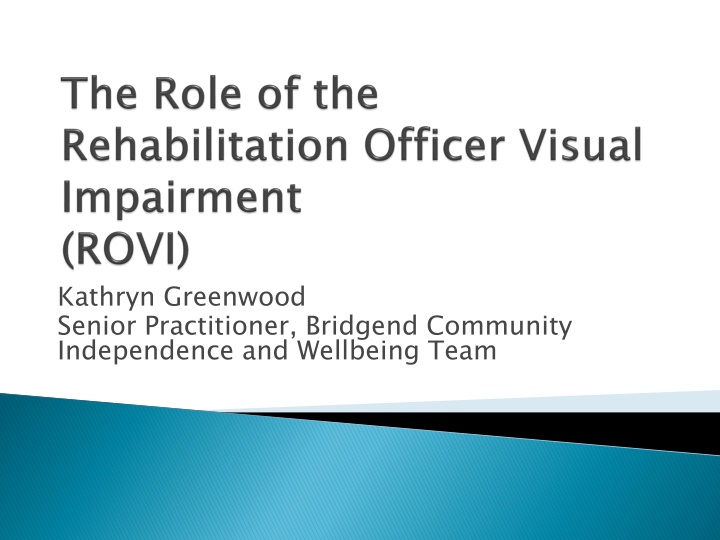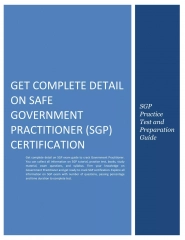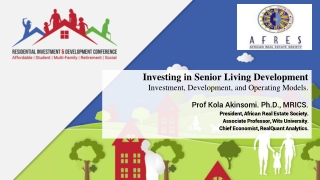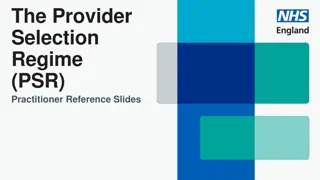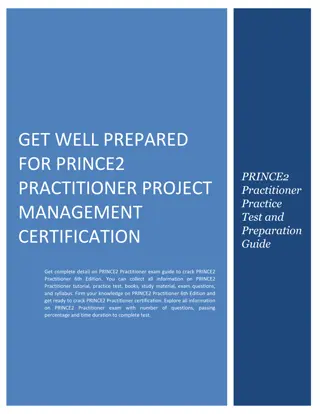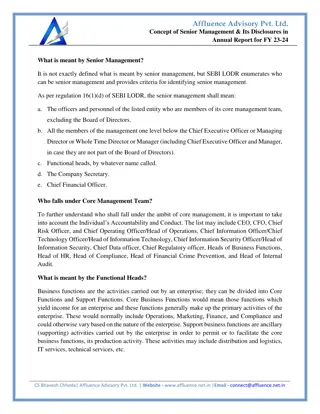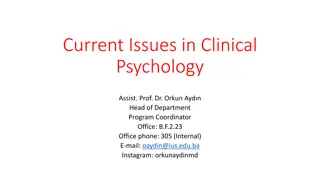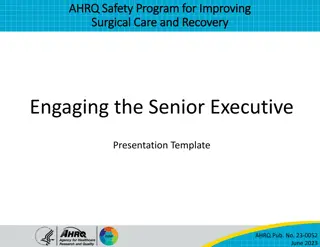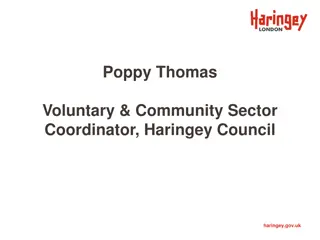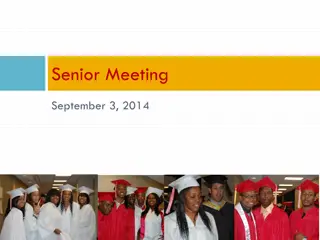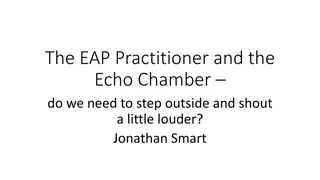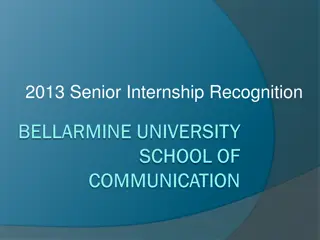Kathryn Greenwood - Senior Practitioner in Bridgend Community
Kathryn Greenwood is a Senior Practitioner in the Bridgend Community Independence and Wellbeing Team. She works with adults and children of all ages, including those with additional disabilities and complex needs. Kathryn focuses on building confidence, regaining lost skills, teaching new skills, and maintaining independence. She specializes in areas such as mobility, communication, independent living skills, and emotional support. Her approach involves creating individual rehabilitation programs, teaching safe methods for daily tasks, and empowering people to set new goals. Kathryn has helped individuals with visual impairments by providing training on routes, improving lighting conditions, and conducting awareness sessions. Her work includes a variety of practical scenarios aimed at enhancing independence and quality of life.
Download Presentation

Please find below an Image/Link to download the presentation.
The content on the website is provided AS IS for your information and personal use only. It may not be sold, licensed, or shared on other websites without obtaining consent from the author.If you encounter any issues during the download, it is possible that the publisher has removed the file from their server.
You are allowed to download the files provided on this website for personal or commercial use, subject to the condition that they are used lawfully. All files are the property of their respective owners.
The content on the website is provided AS IS for your information and personal use only. It may not be sold, licensed, or shared on other websites without obtaining consent from the author.
E N D
Presentation Transcript
Kathryn Greenwood Senior Practitioner, Bridgend Community Independence and Wellbeing Team
Setting the scene What is a ROVI? Fitting into the Bigger Picture Take Away Messages
Reading my children a story Flirting with a stranger Nipping into the supermarket to get milk Trying out a new recipe Putting on a bit of make up Telling my wife / partner they look nice Putting up shelves Enjoying an exhibition or going to a show or the cinema
Who we work with: Adults and children of all ages (including those with additional disabilities and complex needs) What we do: Build confidence (provide emotional support) Regain lost skills and teach new skills Maintain and promote independence and choice
Specialist Skills Areas: Mobility Communication Independent Living Skills Emotional/Psychological Support Information and Advice (including info on eye conditions)
This is achieved by: Formulating and following a person-centred, individual Rehabilitation Programme Teaching alternative and safe methods of carrying out everyday tasks (including those involving risk) Empowering, enabling and supporting people to re-establish new goals Assessment for equipment and adaptations
1. Teaching a totally blind 17 year old (who had previously only walked across to her Nan s on her own) the route from Bridgend to Royal College of Music and Drama in Cardiff. Via trains and taxi s and long cane training. 2. Improving general lighting and provision of task lighting and magnification (through low vision assessment) to enable an older person to continue sewing because sewing is my life . 3. Teaching a Job Centre Plus employee the route from home to work. Providing VI awareness training for his colleagues. 4. Teaching an older person living on their own to safely make a cup of tea and prepare a microwave meal. 5. VI awareness sessions in site portacabins with building contractors working on major town centre alterations 6. Scones and i pads
155. Reablement (Rehabilitation) is about helping people to do things for themselves (in contrast to the traditional service models in which the carer does everything) to maximise their ability to live life as independently as possible. It is an outcome-focused, personalised approach whereby the person using the service sets their own goals and is supported by a reablement (rehabilitation) team to achieve them over a limited period. It supports a person s physical, social and emotional needs and aims to reduce or minimise the need for ongoing support after reablement (rehabilitation). Reablement (Rehabilitation) seeks to improve the skills and resilience of an individual in their specific situation.
In March 2002, the National Collaborating Centre for Nursing and Supportive Care (NCC-NSC) was commissioned by NICE to develop clinical guidelines on the assessment and prevention of falls in older people for use in the NHS in England and Wales. NICE clinical guideline 161 Falls: Assessment and prevention of falls in older people
Vision is key to co-ordinate and plan movement and keep gait, balance and stability 40-50% of people with sight loss limit their activities due to fear of falling (Buckley et al 2005, 2010 / Wang 2002 / Davis & Davis 2009)
Person with sight loss is 90% more likely to have multiple falls than someone without sight loss Older people with sight loss are twice as likely to get an injury from falls and twice as likely to get hip fracture (Legood,Scuffham & Cryer 2002) RNIB estimate that: the cost to the NHS of falls associated with visual impairment is at least 25.1 million per annum.
Practical interventions Advice and information Bridgend Further reading: Deteriorating Vision, Falls and Older People: The Links, Visibility (2005) The Importance of Vision in Preventing Falls, British Geriatrics Society and the College of Optometrists (2010) Housing for People with Sight Loss: A practical guide to improving existing homes, Thomas Pocklington Trust (2009)
Early Intervention, Prevention (Social Services and Wellbeing (Wales)Act 2014) Integrated Working, Co-production (It s all about the individual and who else can work with us to empower them) Think Scones and iPads! Visit the Rehabilitation Stand for local contacts and more information
